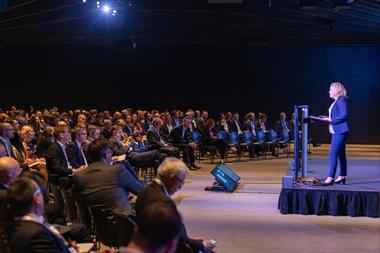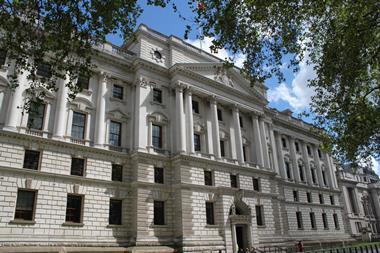An independent review of the UK’s net-zero strategy has raised hopes for infrastructure investors. Christopher Walker reports
Former energy minister Chris Skidmore published his independent review of the UK’s net-zero strategy in January. Mission Zero makes 129 recommendations, highlighting the greater role that business can play in making better use of infrastructure.
It has been broadly welcomed by the institutional investment industry. “A report that recognises ‘there is no future but a green economy’ and ‘infrastructure is the key that will unlock net zero’ was always going to get my vote, and that of UK businesses generally,” says Richard Threlfall, global head of infrastructure, government and healthcare at KPMG International. “Full marks from me.”
There were a number of “pillars” to the review and the second, “powering net zero”, set out three proposal relating to energy infrastructure.
Accelerating the energy security strategy
Skidmore called for an update to the mandate of energy regulator Ofgem, creating a future system operator (FSO) and accelerating the connection of cheaper renewables, such as solar and onshore wind.
This is broadly welcomed. Most senior players agree, in the words of Gregg McClymont, executive director of public affairs for Europe at , that “to achieve net zero the UK energy sector must be cohesive, not fragmented, and capable of taking a long-term view of the interdependencies necessary”.
Darryl Murphy, managing director for infrastructure at , thinks the report “correctly highlights that the pathway to net zero involves a range of investment across different energy technologies, but these investments need to be made taking into account that the energy sector is a system”.

He says: “Managing this system needs an overall guiding mind in the form of the FSO.”
He believes one of the key roles of the FSO will be to look at the interaction of the different technologies and, not least, focus on the vast amount of investment required into electricity networks.
“Currently, the timeline to achieve grid connections to proposed solar and onshore wind is far too distant and the proposals should help reduce this. Without improvements to the timeframe to achieve grid connections, the target levels of investment will simply not be delivered.”
High levels of investment are certainly required. The UK’s electricity demands will continue to rise as the transition to electric transport and heat accelerates.
Lauren Pamma, programme director at the Green Finance Institute, argues: “Our electricity grid must quickly respond to meet the demands of our low-carbon economy. We are hopeful that the [FSO] will focus on ensuring that supply meets demand, so that we don’t risk undermining renewable project development, which threatens our ability to decarbonise.”
Cross-sectoral infrastructure strategy by 2025
The report also demands a cross-sectoral infrastructure strategy by 2025, supporting the building and adaptation of infrastructure for electricity, hydrogen, other liquid and gaseous fuels and CO2 networks that support the green economy. Threlfall also “particularly welcomes” this and believes it “should draw on advice from the National Infrastructure Commission”.
Murphy adds: “Currently, there are some overarching objectives which appear to be in relative silos, such as the development of a hydrogen economy, the role of storage, the use of green fuels, decarbonisation of heating and transport, and – not least – the investment required in the underlying network to enable these technologies.

“However, these all interact with each other and, as an investor, we are seeking clarity on the investments required, the commercial models that will underpin them and how policies within each area impact one another. A total system approach is required, underpinned by a cross-sectoral strategy, such as the one proposed.”
Pamma agrees: “There is no one-size-fits-all solution to decarbonisation. We must invest to scale a range of renewable energy to diversify our energy mix and decarbonise some of the toughest areas in transport, such as shipping, aviation and more. Our energy system is complex, and the journey to net zero shouldn’t be looked at in isolation.
“Our focus now must be removing the market barriers and unlocking the necessary funding to scale the uptake of both new and existing solutions. This requires a cross-sectoral, collaborative infrastructure strategy which can support new and emerging technologies.”
McClymont says: “It is crucial is to speed up government decision making on the financing models that will make green infrastructure networks investable.”
He gives the example of early-stage hydrogen development, which depends on the existence of reliable offtakers, a role in Europe which the EU is set to underwrite via its proposed Hydrogen Bank. The UK needs to offer reassurance on the level of demand to make a market for initial hydrogen production, he says.
Reforming approaches to planning
One element of speeding up decision making could be the suggested planning reforms. The review recommends “unleashing solar and developing onshore wind” to be “rapidly deployed in communities across the country and enable local people to reap the benefits of local, low-carbon generation”.
The review seems to caveat these recommendations with the phrase “where locally supported”, perhaps reflecting commonplace opposition to the building of onshore windfarms from both voters and politicians.
Threlfall welcomes such a “reform of the planning system, which is currently too slow to deliver the UK’s decarbonisation imperative”.
Murphy says: “Planning is widely recognised as one of the major obstacles to delivering renewables at the pace proposed. We welcome changes to the planning system that will accelerate the ability to invest into renewables.”
The call for a government review of how the UK should change regulation for emerging net-zero technologies is striking to McClymont. “It opens up the entire policy and regulatory approach for revision. Making tangible to local communities the benefits of offshore wind and solar is crucial to speeding up sluggish permitting processes.”
Pamma says: “Local authorities are at the heart of solving the climate crisis.” It is estimated that 82% of the UK’s emissions are within the scope of influence of local authorities, underscoring the transformative role local governments could play in achieving national net-zero ambitions, she says.
“It’s essential that we open the way for local leadership on climate, as this is where our ambitious national goals will be delivered. It is also crucial that communities see the benefits of these projects, this is vital for encouraging widespread support and uptake.”
Although the report has provoked enthusiasm, it should be remembered that it is not a legislative programme. When the review was announced, Stephanie Pfeifer, CEO of the Institutional Investors Group on Climate Change, said it “was a timely reminder of both the net-zero opportunity and the importance of clear, long-term government policy”.
She added: “Investors will now be keenly awaiting the government’s response to Chris Skidmore’s review and specifically how they propose to further unlock the necessary investment to keep the UK ahead in the global race to net zero.”

















